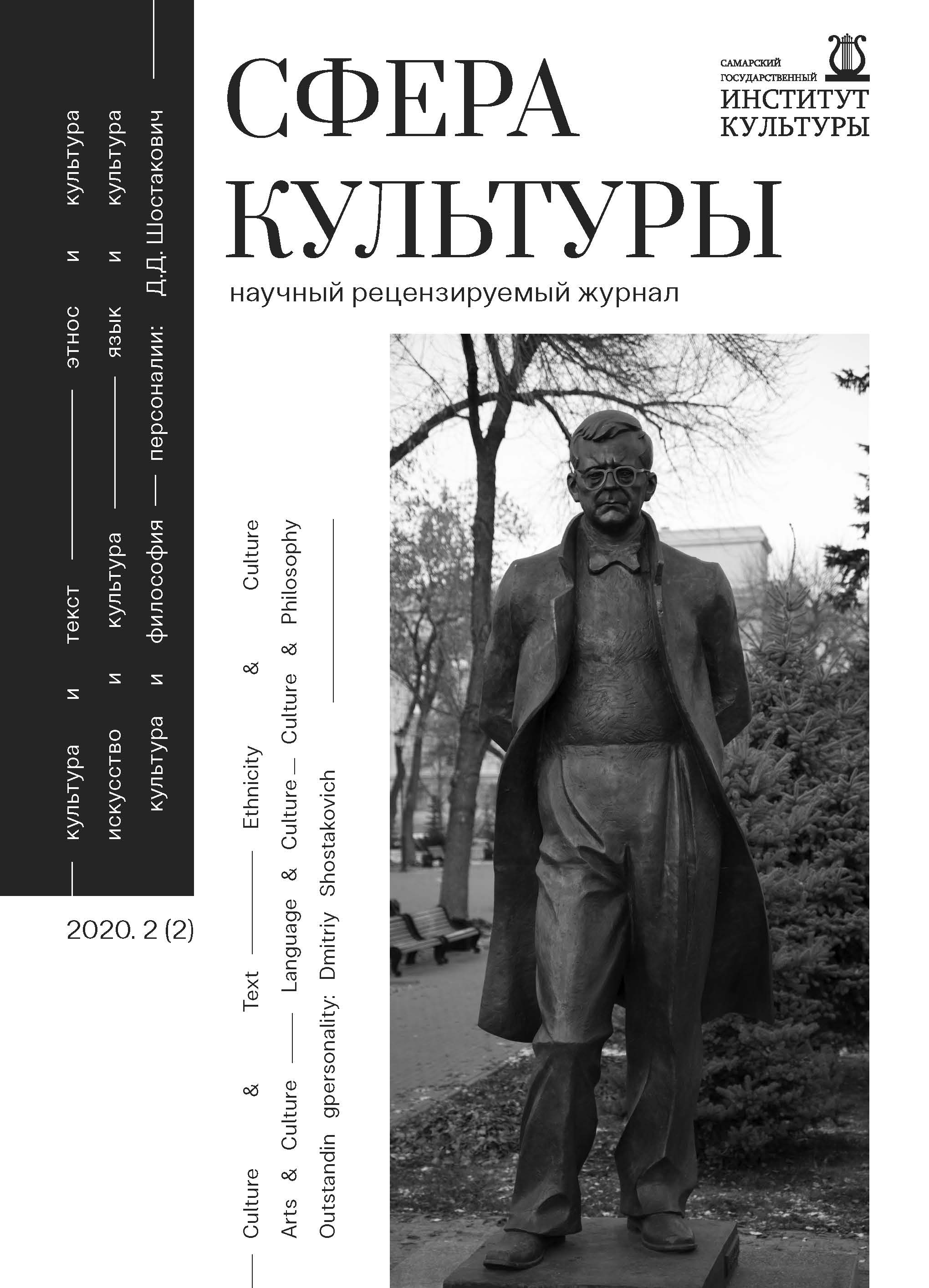Том 1, № 2 (2020)
- Год: 2020
- Выпуск опубликован: 15.12.2020
- Статей: 15
- URL: https://journals.eco-vector.com/2713-301X/issue/view/4313
Весь выпуск
Статьи
ДОКУМЕНТОСФЕРА В СОЦИОКУЛЬТУРНОМ ПРОСТРАНСТВЕ
Аннотация
 13-24
13-24


«Многоуважаемый книжный шкаф»: какие книги читали прототипы героев повести А.Н. Толстого «Детство Никиты»?
Аннотация
 25-37
25-37


Тюрко-монгольские мотивы и символы в «алтайской» прозе М. Веллера
Аннотация
Автор анализирует рассказы М.И. Веллера, написанные на основе впечатлений от пребывания на Алтае в 1976 году. В статье представлена попытка интерпретировать «алтайские» рассказы М.И. Веллера в контексте некоторых важнейших тюрко-монгольских образов, символов и мотивов, таких как крылатый конь «тулпар», «сцена терзания», мотив «кут-гюч» и др., что в очередной раз будет способствовать расширению горизонта художественного осмысления топоса Алтая в отечественной литературе.
 38-46
38-46


Осмысление символического языка мордовской этнокультуры на примере творчества художника-этнофутуриста Н.В. Рябова
Аннотация
Автор поднимает проблему сохранения традиционной этнокультуры и считает, что актуализация национальных традиций сможет обеспечить существование культурного разнообразия. Этнофутуризм анализируется в статье как одно из направлений современного изобразительного искусства Мордовии. Обобщаются концепции ученых и искусствоведов из национальных республик России, в том числе из Республики Мордовия. На примере творческого континуума мордовского художника Н.В. Рябова рассматриваются сущность, функционал и востребованность этнофутуризма в современной культуре. Автор заключает, что этносимволические направления дают возможность поколению XXI в.: 1) погружаться в историческое прошлое и осмыслять символический язык этнокультуры; 2) открывать новые перспективы этнокультурного проектирования, трансформируя традиционные образы.
 49-58
49-58


Украинские антрепризы и музыкальный театр Дальнего Востока в 1900-1905 гг
Аннотация
 59-68
59-68


Выразительность исполнения в хореографическом искусстве как неотъемлемая составляющая отечественной танцевальной культуры
Аннотация
 71-82
71-82


«Бег времени» на страницах неологических «Ежегодников» XXI века
Аннотация
 85-92
85-92


Маргинальные жертвы как феномен культуры
Аннотация
 95-100
95-100


Гуманитарное пространство Самары / Куйбышева: время и место Д.Д. Шостаковича
Аннотация
 103-110
103-110


Время и пространство в музыке Д.Д. Шостаковича
Аннотация
 111-116
111-116


Аудиоцикл «Говорит Дмитрий Шостакович» в рамках виртуального проекта-аудиоцикла «Голоса великих. Коллекция виниловых записей из фондов Самарской областной универсальной научной библиотеки»
Аннотация
 117-123
117-123


«Святые узы товарищества» в судьбе и поэтике творчества Д.Д. Шостаковича
Аннотация
 124-131
124-131


Исторические корни системы высшего образования, или каков возраст университетов Узбекистана?
 135-138
135-138


Самара - Самарканд: расширение гуманитарных границ. К 600-летию Самаркандского государственного университета
 139-140
139-140


Самаркандский государственный университет - наследник великих интеллектуальных традиций
 141-141
141-141












